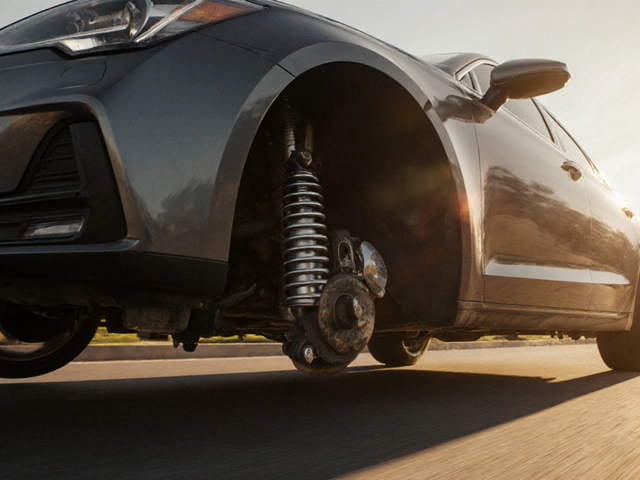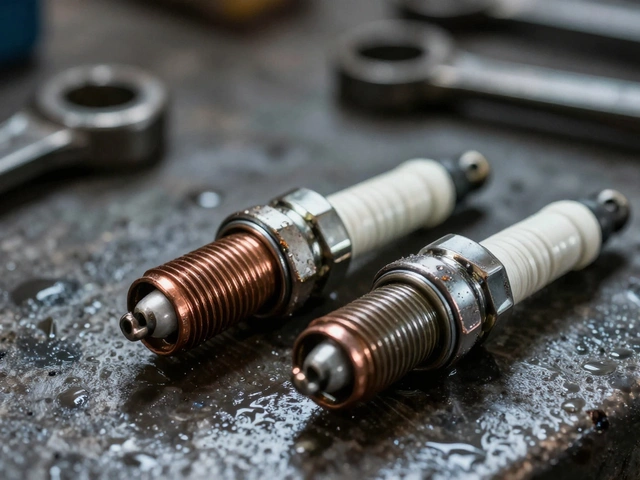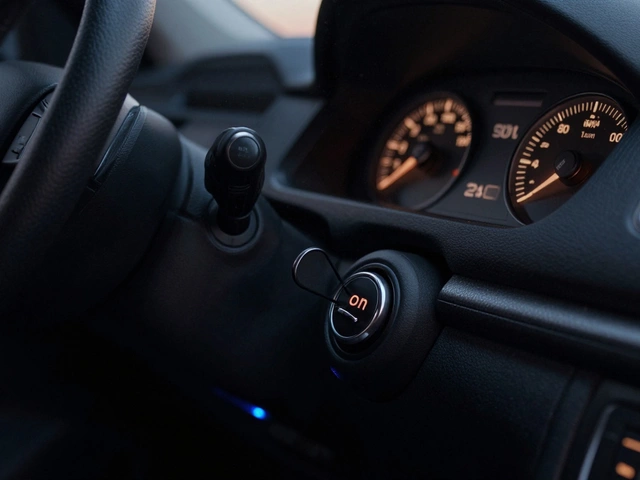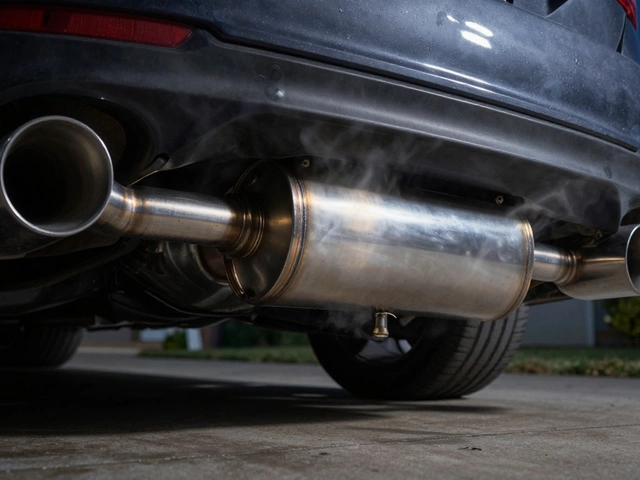Exhaust System Performance Estimator
Choose Your Vehicle
Exhaust Type Selection
Cat-back Exhaust
Catalytic converter to tailpipe
Axle-back Exhaust
Rear axle to tailpipe
Turbo-back Exhaust
Turbo outlet to tailpipe
Headers
Engine block to exhaust manifold
Straight-through
Tailpipe only (no muffler)
Material Selection
Picking the perfect exhaust system can feel like a guessing game, especially with dozens of options crowding the market. Whether you crave a deeper growl, a few extra horses, or just want to keep your ride legal and reliable, this guide breaks down everything you need to know so you can make a confident choice.
Understanding Exhaust System Basics
At its core, an Exhaust system is a network of pipes, mufflers, and resonators that channels combustion gases away from the engine and reduces noise. It also plays a subtle role in back‑pressure, which affects engine efficiency. A stock system is tuned for a balance of performance, emissions, and sound, but many owners swap it for aftermarket parts that tip the scales toward one or two of those goals.
Types of Aftermarket Exhausts
Not all exhaust upgrades are created equal. The main families are distinguished by how much of the original piping they replace.
- Cat-back exhaust is a system that replaces everything from the catalytic converter to the tailpipe, leaving the manifolds and headers untouched.
- Axle-back exhaust swaps only the section from the rear axle to the tip, making it the simplest bolt‑on upgrade.
- Turbo-back exhaust replaces the piping from the turbocharger outlet all the way to the tailpipe, ideal for turbocharged engines seeking maximum flow.
- Header replaces the factory exhaust manifolds, often paired with a cat‑back or turbo‑back for a full‑system overhaul.
- Straight‑through exhaust removes the muffler and resonator entirely, delivering the loudest possible note but usually illegal on public roads.
| Type | Coverage | Power Gain (Typical) | Sound | Installation Complexity |
|---|---|---|---|---|
| Cat‑back | Catalytic converter to tailpipe | 5‑10 hp | Deeper, sportier | Medium - clamps & bolts |
| Axle‑back | Rear axle to tailpipe | 2‑5 hp | Minor tone change | Easy - bolt‑on |
| Turbo‑back | Turbo outlet to tailpipe | 10‑20 hp | Aggressive, louder | Hard - may need custom mounts |
| Header | Engine block to exhaust manifold | 15‑30 hp | More aggressive note | Hard - welding may be required |
| Straight‑through | Tailpipe only (no muffler) | Variable | Very loud, raspy | Easy but often illegal |
Material Choices Matter
The pipe material influences durability, weight, and corrosion resistance. Here are the three most common options.
- Stainless steel offers excellent rust resistance and a classic look. Most mid‑range upgrades use 304 or 409 grade, with 409 being cheaper but more prone to corrosion over time.
- Titanium is about 40% lighter than stainless and resists corrosion even in salty coastal air. The trade‑off is a higher price tag and a slightly different tonal quality-often a sharper, more metallic scream.
- Aluminized steel is the budget choice. It’s coated with an aluminum‑silicon alloy to delay rust, but it won’t last as long as true stainless or titanium.
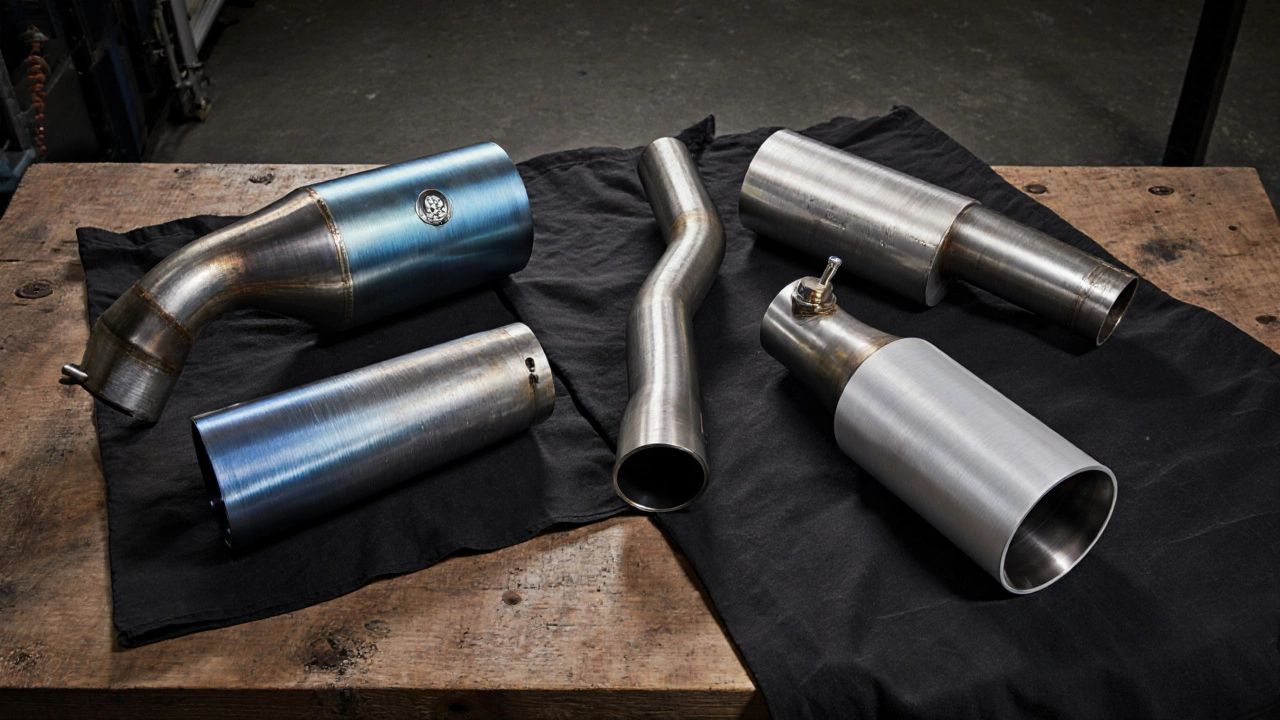
Matching Exhaust to Engine Type
Not every exhaust style works equally well on every powerplant.
- Turbocharged engine benefits most from a turbo‑back or full‑system upgrade, as the increased flow reduces turbo lag and improves boost efficiency.
- Diesel engine often runs hotter and produces more soot. A stainless steel cat‑back with a larger resonator can help keep exhaust temperatures in check while still meeting emissions standards.
- Naturally aspirated gasoline engines get a solid gain from a well‑designed cat‑back or header, especially when paired with a performance muffler.
Performance Gains and Sound Expectations
Most street‑legal upgrades promise anywhere from 5 to 15 extra horsepower. The actual gain depends on displacement, existing pipe diameter, and whether the engine already has a performance tune.
Sound is the other big selling point. A cat‑back in stainless steel will typically add a low‑rumble that deepens at higher RPMs, while a titanium axle‑back often delivers a sharper, higher‑pitched growl. If you crave an aggressive note without breaking the law, look for a muffler designed with a “dual‑chamber” layout that shapes tone while staying within decibel limits.
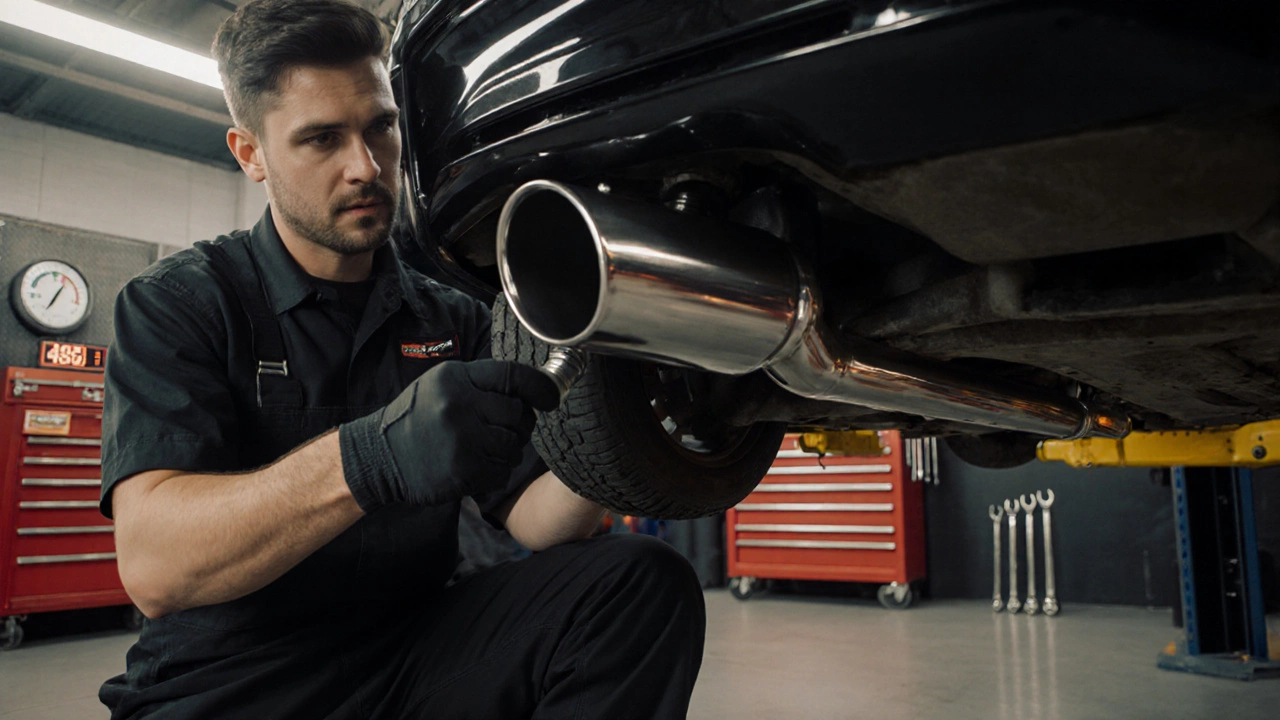
Installation Considerations
Before you buy, run through this quick checklist.
- Verify fitment: Check your vehicle’s year‑make‑model against the manufacturer’s fit guide. Small differences in hanger locations can turn a bolt‑on into a custom job.
- Know the legal limits: In the UK, the Road Vehicle (Construction and Use) Regulations cap noise at 96 dB for most passenger cars. Some performance mufflers exceed that, so make sure the product is EU‑type approved.
- Check warranty impact: Some manufacturers void power‑train warranties if you install a non‑OEM exhaust. Look for a brand that offers a “no‑warranty‑void” clause.
- Plan for OBD‑II re‑mapping: A freer‑flowing exhaust often requires an updated engine control unit (ECU) map to realize full power. Many shops can flash a “performance tune” that works with the new hardware.
- Budget for labor: DIY‑installations are feasible for axle‑back and many cat‑back kits, but turbo‑back or header swaps usually need professional welding and alignment.
Buying Checklist - What to Look For
- Material quality (stainless grade, titanium purity)
- Fitment confirmation for your exact model year
- Decibel rating and legal compliance
- Included hardware (hangers, gaskets, clamps)
- Warranty length and coverage terms
- Availability of a matching performance tune or ECU flash
Frequently Asked Questions
Will a cat‑back exhaust make my car louder?
Yes, but the increase is usually modest-around 3‑5 dB-because the catalytic converter and muffler remain stock. The sound becomes deeper and more resonant rather than screaming.
Is titanium worth the extra cost?
If weight reduction is a priority (track days, performance builds) and you live in a coastal area where corrosion is a concern, titanium pays off. For everyday street driving, high‑quality stainless steel offers a better price‑to‑performance ratio.
Can I install an exhaust myself?
Axle‑back kits are the most DIY‑friendly; most come with basic hand tools and require only bolt removal. Cat‑back installations are doable for confident DIYers, but turbo‑back or header swaps often need professional welding and alignment.
Will changing the exhaust affect fuel economy?
A freer‑flowing exhaust can improve fuel efficiency by up to 2 % on highway cruising because the engine works less against back‑pressure. However, if you pair it with an aggressive tune, fuel consumption may rise.
Do I need to replace the resonator when I upgrade?
Not always. Some cat‑back kits include a high‑flow resonator that preserves sound quality while staying legal. If your kit omits it, you might notice a sharper tone and could exceed noise limits.
Armed with the right knowledge, you can choose an exhaust that fits your performance goals, budget, and local regulations. Happy hunting, and enjoy the new soundtrack of your ride!


